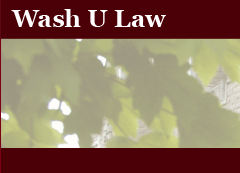Article Title
Legal Education as a Private Good
Publication Title
Washington University Journal of Law & Policy
Abstract
This short Article is intended to be positive, not normative; it is an exploration of the current situation viewed through a particular lens. Through that lens, the Article is intended to be a clear-eyed description of where we are. The current situation presents serious problems of affordability and accessibility. In the long run, society will suffer from these problems; it will suffer doubly because certain demographic groups will lose access disproportionately. Again, I would prefer the old world where it was recognized that education generally and legal education in particular provided important public goods and where society acted to ensure that those public goods continued to be provided. But I do not see a path back to that world. Thus, this Article is not about that world, but about the world in which we find ourselves.
Let us begin by considering law school pricing in a world where a legal education is purely a private good. First, as I mentioned above, when viewed as a capital asset, the most a law student should be willing to pay for a legal education would be the present discounted value of the increase in expected earnings from a law degree. There have been several studies along these lines, and the evidence is mixed about whether the current cost of a legal education is “worth it” in this sense. Professor Schlunk, who has probably done the most careful analysis, concludes that a legal education pays off for about 31 percent of average students, 21 percent of good students, and 31 percent of exceptional students. But he skews the analysis against profitability in a number of ways, such as considering only private school tuition, assuming no scholarships, and assigning a discount rate of 12 percent. With more generous (or realistic?) assumptions, his analysis may well have resulted in a net financial surplus from a legal education for the average student. Professor Organ’s analysis in this volume accounts for some of these shortcomings, for example, by taking scholarships into account. He finds that law school is worth it (results in at least marginal financial viability) for about 46 percent of all Class of 2011 graduates and for at least 70 percent of 2011 graduates at about one-quarter of all law schools. This analysis takes scholarships into account, so Professor Organ’s estimates are probably closer to the mark than Professor Schlunk’s. Nevertheless, his analysis also contains elements that may skew it against profitability, so the actual numbers may be somewhat better than this.
Recommended Citation
Steven L. Willborn,
Legal Education as a Private Good,
41
Wash. U. J. L. & Pol’y
089
(2013),
https://openscholarship.wustl.edu/law_journal_law_policy/vol41/iss1/5
